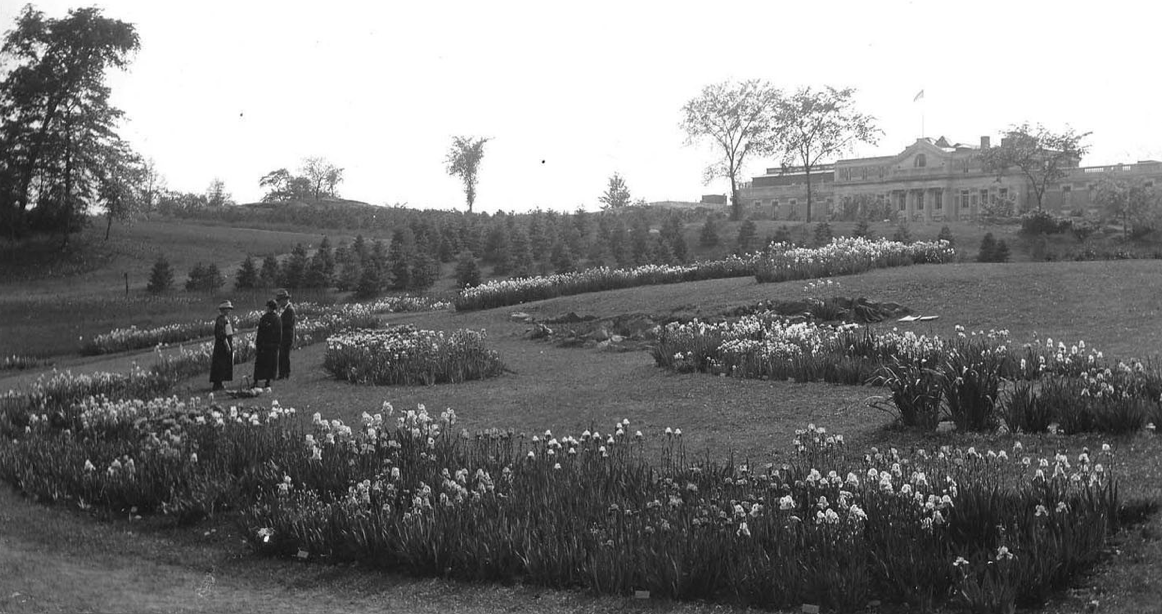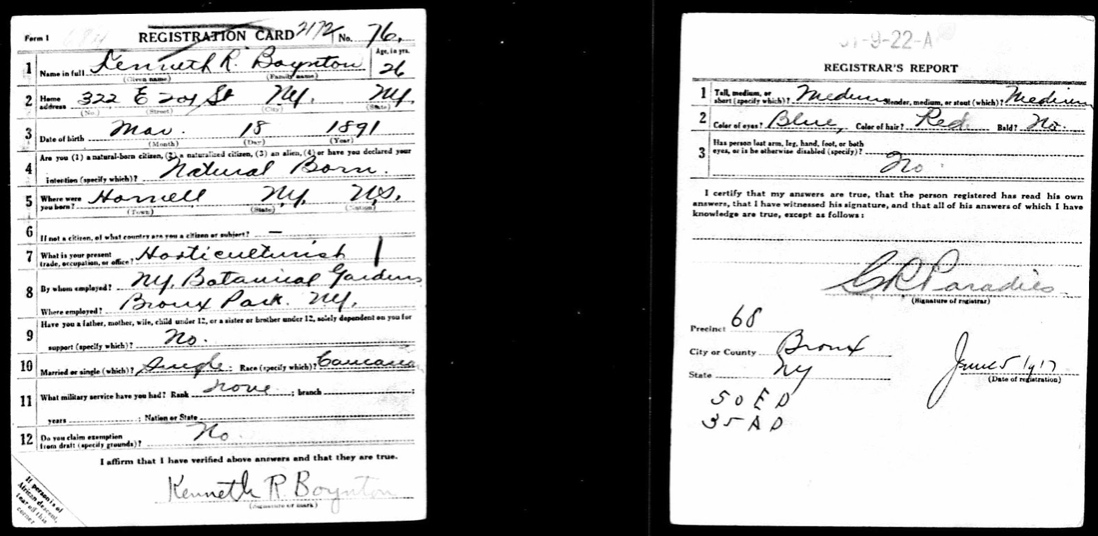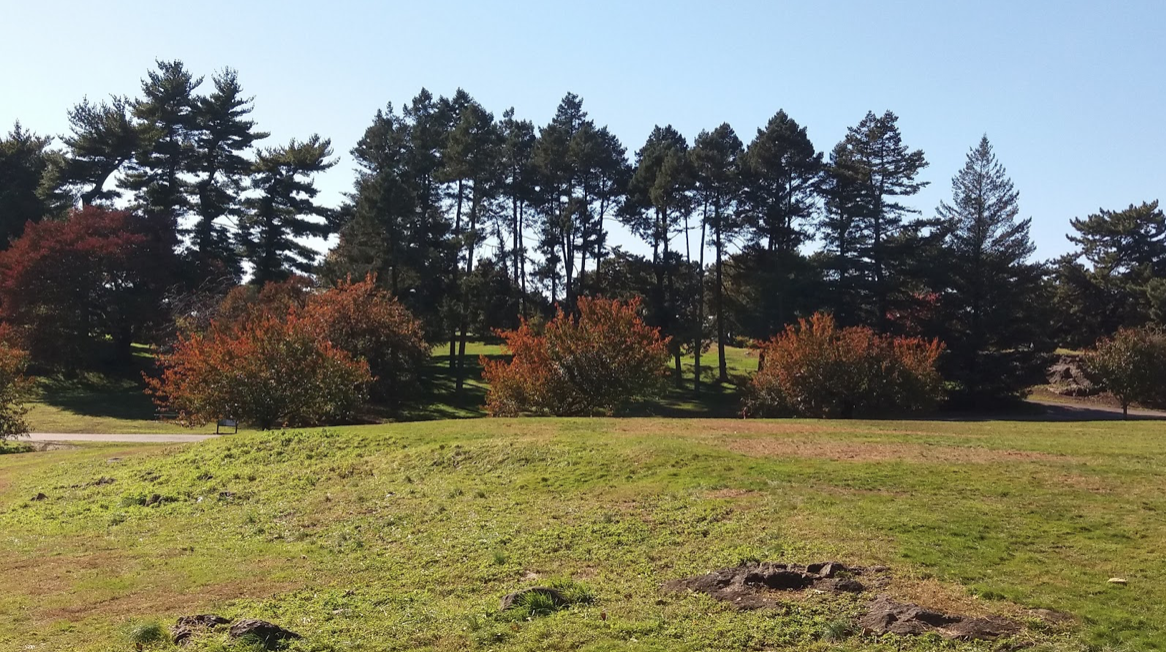The Victory Grove of Douglas Spruce
Posted in From the Library on November 12 2018, by Don Wheeler
Don Wheeler is the Collection Development Librarian of The New York Botanical Garden.

There is always something to discover at the Garden, even for those of us privileged to work here every day. While looking for something else, an article in the 1919 volume of the Journal of the New York Botanical Garden caught my eye: “The planting of trees as war memorials.” In the January 1919 issue, Edward Adams, prominent banker, engineer, philanthropist, and member of the Board of The New York Botanical Garden, suggested the planting of Douglas Spruce trees as a living memorial to the men and women who had served in the recently ended First World War. He proposed that trees be planted on the grounds of The New York Botanical Garden with contributions of $10 per tree from citizens wishing to participate. (That $10 is equal to about $146 today when adjusted for inflation.)
Maybe serendipitous—as can happen when searching any library—but certainly this find is timely. This November 11, 2018 was the 100th anniversary of the Armistice that ended the “War to End All Wars” that we now call World War I. The scale of the fighting was unprecedented in modern history, with over 70 million people involved directly as military personnel. To get an idea of the scale, imagine every single person now living in Beijing, Moscow, Tokyo, London, New York City, Rome, and Los Angeles all in uniform, all engaged in the conflict. Over 20 nations participated with fighting occurring in Europe, Africa, the Middle East, and the Pacific. It is estimated that between 8 and 16 million military personnel died as a result of the fighting. As a comparison, this would be equal to everyone now living in New York and Rome. Additionally, another nearly 8 million civilians died.
America entered the war in 1917, mobilizing over 4 million military personnel, with half a million of them from New York State. The New York National Guard was Federalized and organized into military units and sent to France in 1918. Some of these New York soldiers had, just months earlier, returned from the Mexican border resisting incursions into Texas by Pancho Villa. The New York units were organized into the 27th Division, including New York City’s 69th and 369th infantry regiments. Of the nearly 117,000 Americans who died as a result of the war, 13,956 of them were New Yorkers.

Among those soldiers who returned was Kenneth Boynton, an employee of The New York Botanical Garden. Kenneth lived at 322 East 201st Street and worked as the head gardener’s assistant as well as an editor of the Journal of The New York Botanical Garden before the war. Kenneth was inducted into the Army in May 1918 and was discharged February 1919. After his discharge he returned to the Garden as Marshal of the Garden School.
The scale of the war and the suffering prompted many calls to create memorials. In Australia, Canada, and England, the idea of planting trees as memorials became very popular. In the United States, the American Forestry Association promoted the idea of planting memorial trees and began publishing a ‘National Honor Roll, Memorial Trees’ naming the honorees and the city where the tree was planted. Trees were planted in cities and towns across America, often with plaques identifying the named honoree. In Brooklyn, some of these plaques have been restored along Eastern Parkway.
Kristine Paulus, Plant Records Manager at the New York Botanical Garden, writes:
“The grove of Pseudotsuga menziesii (Douglas-fir or Douglas-spruce) in the South Arboretum are all part of accession #47254. The database record says we received 200 plants on 10 July 1919 from Hicks Nurseries. It’s not clear how many were originally planted, but of the 200, 27 remain there today. This note is included in the database record:
‘The New York Botanical Garden Bronx Park Descriptive Guide to the Grounds, Buildings, and Collections, June, 1920 states: “The Victory Grove of 150 Douglas spruces…were already about five feet high when planted in the spring of 1919 as war memorials.’”

Unfortunately, the records of names of the donors and honorees may not have survived, however the trees have. The ‘Victory Grove’ stands just south of Daffodil hill, a living memory not only to the people who served in the war, but also to the citizens who thought to honor them then and for the future.

